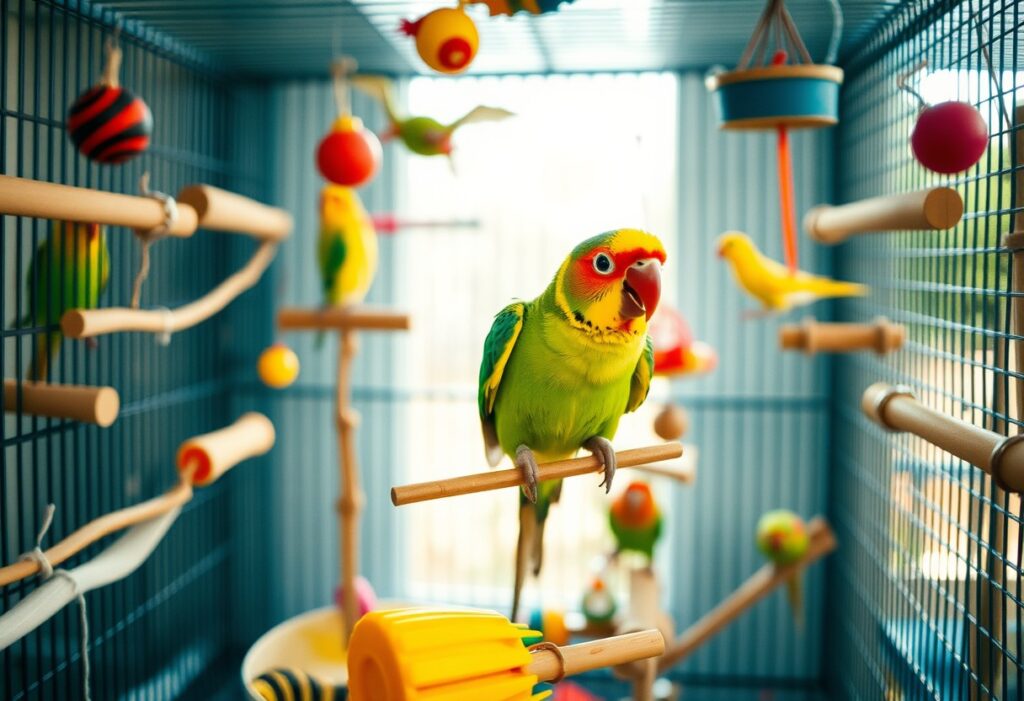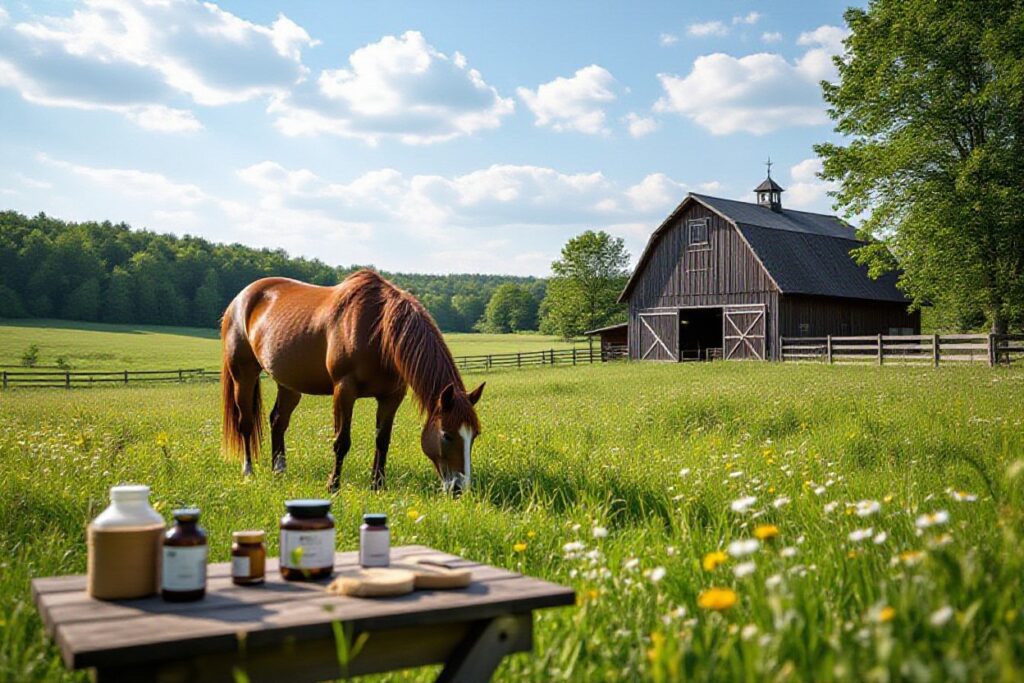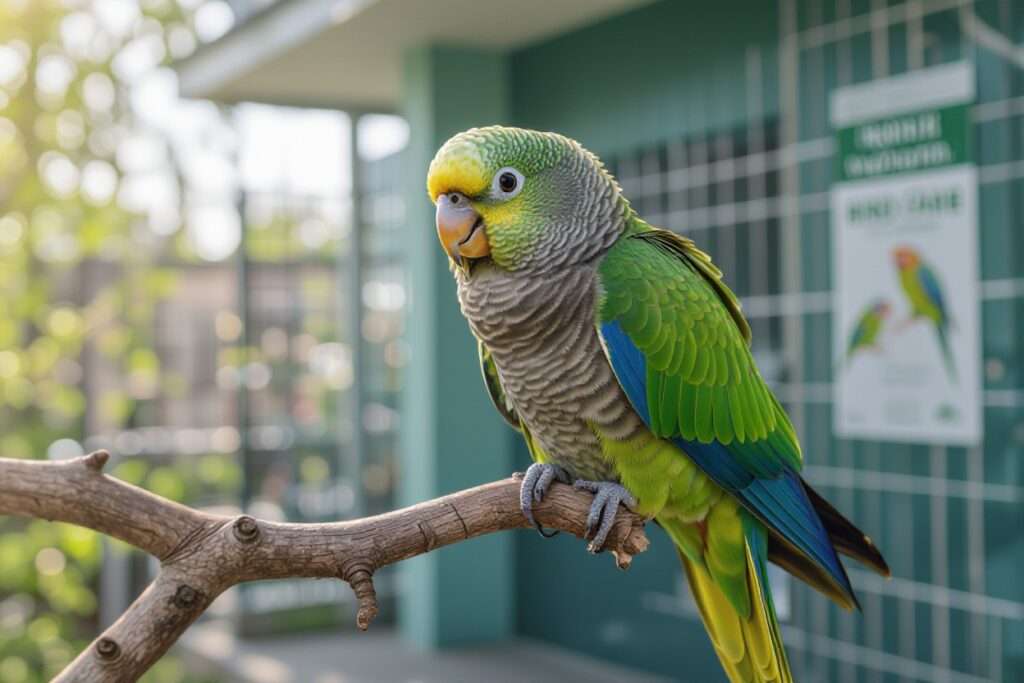Development plays a crucial role in shaping the health and well-being of your birds. Regular exercise is necessary for strengthening their muscles and improving their coordination, which can significantly impact their ability to fly and forage. You should be aware that insufficient physical activity can lead to issues like obesity and lethargy, posing serious health risks. Conversely, engaging your birds in active play and providing opportunities for exploration can lead to enhanced social behaviors and increased longevity. Understanding this vital aspect of avian development will help you nurture healthier and happier birds.
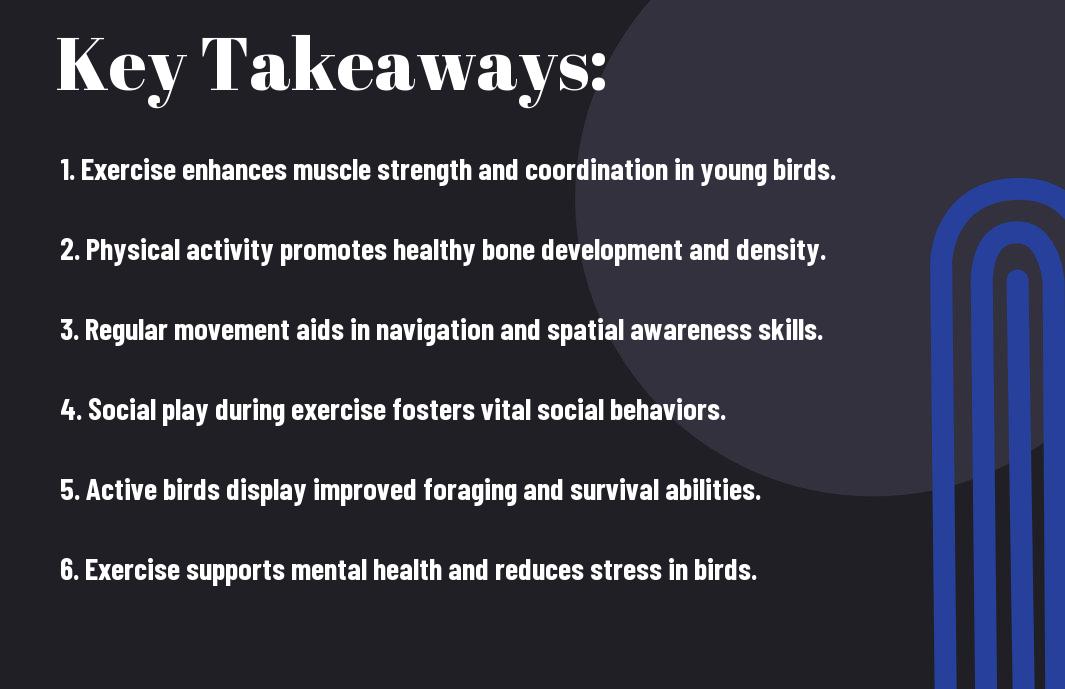
The Importance of Exercise in Early Development
While developing into adulthood, birds go through various stages that require different forms of support. Among these, exercise plays a crucial role in their early development. When you consider the first few weeks or months of a bird’s life, it becomes clear that their physical and neurological growth is significantly influenced by how much they exercise. This is particularly important for species that rely on their flight capabilities, as early fitness can determine their survival and adaptability as they mature.
Physical Growth and Development
To understand the significance of exercise in birds, it’s necessary to recognize how it directly contributes to their physical growth. During their early stages, birds experience significant muscle development, coordination, and strength building—all of which are enhanced through physical activity. Regular movement and practice help strengthen their wings and legs, laying the groundwork for their future ability to fly and forage effectively. Without sufficient exercise, birds may struggle with muscle atrophy or delayed physical development, which can lead to severe complications later in life.
Additionally, exercise aids in maintaining a healthy body weight and encourages the development of stronger bones and muscles. Your attention to a bird’s exercise routine in its formative years can make a difference in its overall health and longevity. Proper physical activity ensures that a bird not only grows but grows in the right way, developing the attributes they need to thrive in the wild.
Neurological Benefits
Any discussion about bird development must also include the brain’s vital role. Engaging in regular exercise has been shown to have significant neurological benefits for young birds. Physical activity stimulates brain development, enhancing learning experiences and improving memory and cognitive function. Your encouragement of playtime, exploration, and flight practice can lead to sharper problem-solving skills and better adaptability to their environment.
Early experiences shaped by exercise further influence the neuroplasticity that occurs in young birds. As they encounter various stimuli, their brains create new neural connections, crucial for future learning and adaptability. This enhancement of brain function isn’t just beneficial in the short term; it sets the foundation for a bird’s lifelong cognitive abilities. Ultimately, the investment you make in promoting exercise during early development can lead to a more intelligent and capable bird, ready to face the challenges of the world outside its nest.
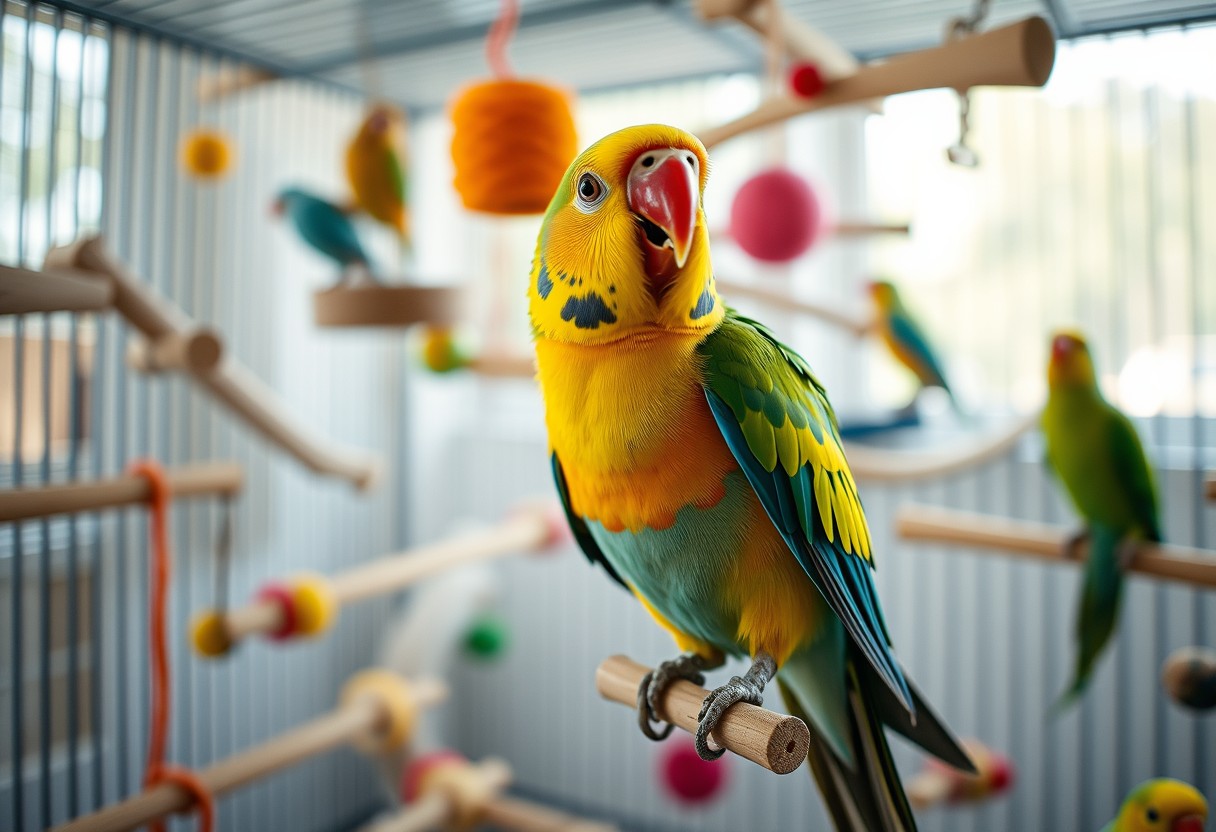
Types of Exercise in Birds
Some of the key types of exercise you might encounter in birds include a variety of natural and enriched behaviors that contribute to their overall development. Understanding these types can help you create a more suitable environment for your feathered friends. Here’s a breakdown of the types of exercise influences:
| Type of Exercise | Description |
|---|---|
| Flight | Birds use their wings to fly, which improves their cardiovascular health and muscle strength. |
| Climbing | Many species engage in climbing behaviors that increase their dexterity and coordination. |
| Foraging | Searching for food encourages movement and mental stimulation, beneficial for their overall well-being. |
| Bathing | Water activities not only keep feathers clean but also promote physical exercise. |
| Social Interaction | Engaging with other birds promotes physical play and social development. |
Natural Behaviors
The natural behaviors exhibited by birds play a significant role in their development and well-being. As a bird owner, you should recognize that these behaviors are not merely recreational; they serve crucial purposes for a bird’s physical and emotional health. Providing opportunities for your bird to engage in these activities can limit stress and encourage natural instincts, leading to a happier and healthier bird.
Allowing your birds to partake in activities like flying, climbing, and foraging can enhance their strength and agility. By setting up perches and toys, you can encourage your birds to climb and explore, mimicking their instincts in the wild. These activities not only keep them physically fit but also stimulate their minds.
Environmental Enrichment
Environmental enrichment refers to the modifications you can make in your bird’s habitat to enhance their quality of life. This may include adding various perches, toys, and feeding methods that stimulate exercise and curiosity. Ultimately, the goal is to encourage exploratory behaviors that are crucial for their development.
Environmental enrichment is vital for your bird’s physical fitness as it promotes a range of exercises. By introducing objects of different textures, colors, and movements, you can create an engaging atmosphere that encourages your bird to explore and interact. Even simple items like cardboard boxes or paper bags can be effective in inspiring your bird’s curiosity.
Birds can greatly benefit from an enriched environment that promotes not only physical activity but also mental engagement. Incorporating various toys, climbing structures, and interactive games can prevent boredom, which often leads to stress and behavioral issues. The right kind of stimulation can enhance your bird’s social skills and overall quality of life.
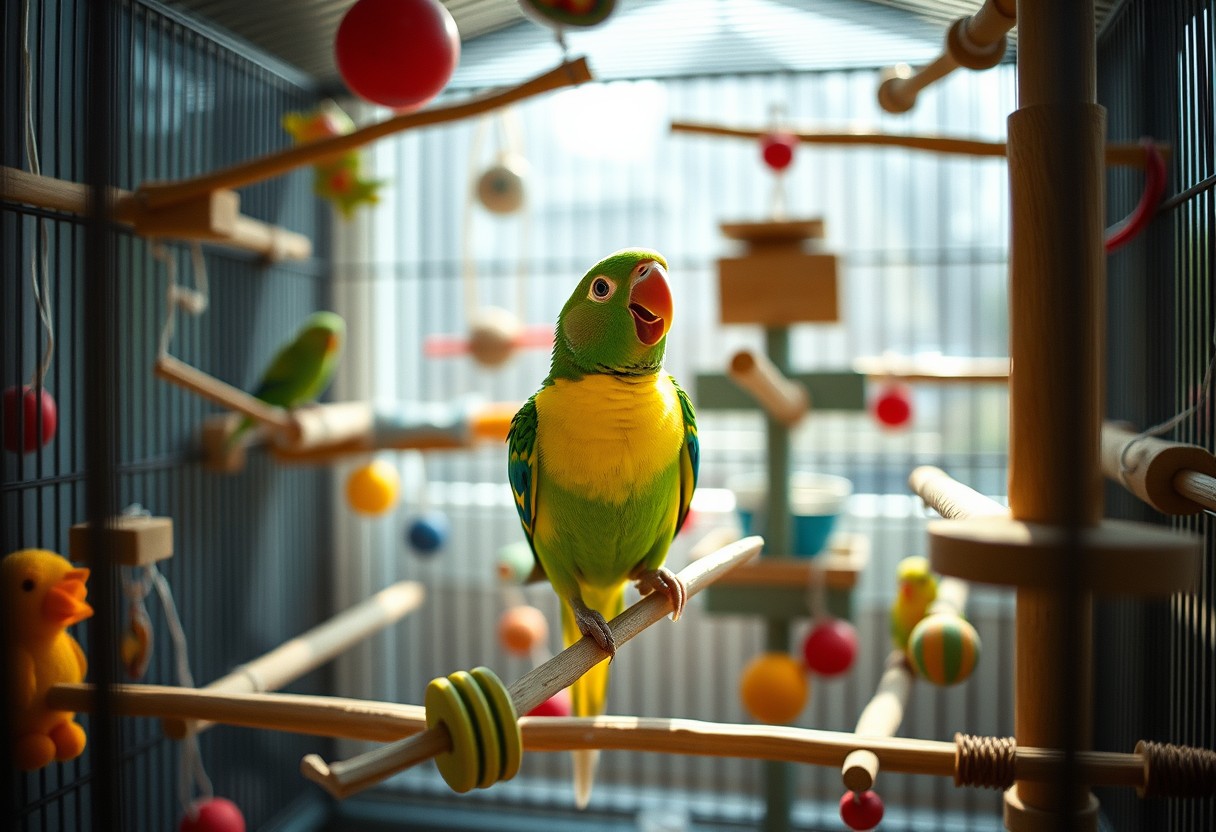
Impact of Exercise on Different Species
Now, when considering the impact of exercise on avian development, it’s important to recognize that different species exhibit varied responses to physical activity. This can significantly influence their growth, behavior, and overall health. Engaging with various bird species allows you to understand how exercise helps in honing their natural instincts, physical abilities, and social interactions.
Passerines
An important group of birds, known as passerines, typically includes sparrows, finches, and warblers. These small birds benefit immensely from exercise as it enhances their **flight capabilities and muscle development**. As you encourage your passerine companions to move around, climb, and fly, you’re aiding them in fostering **stronger leg muscles** and **improved wing strength**. This is particularly important in their early development stages when they are learning to navigate their environment.
Moreover, **social interactions** during playtime can reduce stress and promote a positive learning environment for passerines. When you provide opportunities for them to fly, hop, and play, you encourage important behaviors that lead to better **social bonding** with other birds as well as with you. Such interactions can lead to more **robust mental development** as they engage in problem-solving and exploration during their physical activities.
Raptors
On the other hand, raptors such as eagles, hawks, and owls require a different approach to exercise. These birds of prey are known for their **strength and agility**, and their physical activity is pivotal in developing the skills necessary for hunting and survival in the wild. When you engage with raptors, either in a rehabilitation setting or through falconry, ensure they have regular opportunities for **flying and soaring**. This not only promotes **muscle endurance** but also helps maintain their **sharp reflexes**, which are crucial for capturing prey.
This **exercise directly impacts their hunting performance and can determine their success** in the wild. For raptors, insufficient physical activity can lead to **decreased strength** and reduced **flight proficiency**, making them vulnerable to failed hunts. Additionally, raptors greatly benefit from exercise that stimulates their natural hunting instincts, such as chasing flying prey or practicing their landing techniques. These activities not only prepare them for survival but also foster a **stronger bond** between you and the bird, emphasizing trust and cooperation that enhances training effectiveness.
Summing up
As a reminder, the role of exercise in bird development is pivotal in ensuring both physical and cognitive growth. By understanding the significance of regular movement and activity, you can appreciate how active engagement influences muscle development, coordination, and even social interactions among birds. Whether it’s flapping their wings or engaging in playful pursuits, these activities play a crucial part in preparing young birds for the demands of their environment and ultimately their survival.
Moreover, by recognizing the benefits of exercise, you can advocate for the preservation of natural habitats that allow birds to thrive. Promoting the opportunity for birds to engage in natural behaviors reinforces the importance of exercise in their lifecycle and enhances your appreciation of their complex development processes. In essence, fostering an environment that supports physical activity not only benefits individual birds but also contributes to the ecological balance in which they play a vital role.
Q: How does exercise contribute to the physical development of birds during their early stages?
A: Exercise plays a crucial role in the physical development of birds, particularly in the early stages of their lives. As chicks grow, movements like flapping their wings and climbing help strengthen their muscles and develop coordination. This physical activity is necessary for improving their overall strength and stamina, which prepares them for flight. Furthermore, exercise stimulates proper bone growth and development, leading to healthier and more robust skeletal structures in adult birds.
Q: In what ways does exercise influence social behaviors in developing birds?
A: Exercise significantly impacts social behaviors in developing birds. Engaging in playful activities, such as chasing each other or practicing flight maneuvers, helps young birds learn social cues and establish hierarchies within their groups. These interactions are vital for developing communication skills and fostering social bonds, so proper exercise routines can lead to better social integration. Additionally, active birds often exhibit less stress and more confidence when interacting with peers, aiding in their overall social development.
Q: Can lack of exercise during the development phase affect the long-term health of birds?
A: Yes, a lack of exercise during the developmental phase can have significant long-term health implications for birds. Insufficient physical activity may lead to muscle atrophy, poor coordination, and weakened bones, making them less capable of effective flight as adults. Moreover, sedentary behavior can contribute to obesity, respiratory issues, and other health problems that may reduce life expectancy. It is imperative for young birds to engage in regular exercise to ensure they develop into healthy, active adults.
